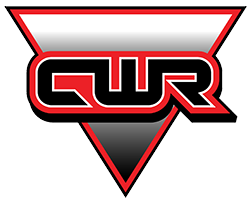
Addressing Moisture and Frost Management in Industrial Coolers
Proper moisture and frost management is vital for any industrial cooler or cold storage facility. Excess condensation and ice buildup can lead to equipment malfunctions, spoiled products, and increased energy costs. Below are key considerations and strategies to help you control moisture, minimize frost accumulation, and maintain the efficiency and reliability of your industrial cooler.
Understanding Moisture Sources
There are several sources of moisture in industrial refrigerators:
- Ambient Humidity: Outdoor air entering the cold environment can carry moisture, which then condenses or freezes on cold surfaces. This is particularly common in facilities where doors or loading docks are frequently opened.
- Ingress Through Doors and Openings: Every time a door opens, warm air can rush into the cooler. If large loading doors remain open for extended periods—or if they lack proper sealing—humidity and heat can significantly disrupt the low-temperature environment.
- Product Moisture: Fresh or partially processed items placed into coolers often have high water content. As they cool, the moisture can evaporate into the air, adding to the humidity load.
Key Challenges of Frost Buildup
Frost buildup is more than a nuisance; it can cause real problems for your industrial refrigeration equipment. For starters, frost acts as an insulator on evaporator coils, hindering heat transfer. This forces the refrigeration system to work harder, leading to higher energy usage.
Second, excessive ice can build up on fan blades, vents, and racks, potentially damaging equipment. In addition, removing ice requires downtime, potentially interrupting operations and creating additional labor costs. Third, frost on the floor or near doorways can create slippery surfaces, increasing the risk of accidents. Heavy ice accumulation on overhead areas also poses the threat of falling ice chunks.
Strategies for Moisture Control
One of the best ways to control moisture is with high-quality insulation and sealing. A well-insulated and tightly sealed cooler enclosure helps maintain consistent temperatures and reduces the infiltration of warm, moist air. Doors, windows, and any structural penetrations must be fitted with appropriate gaskets or weather stripping.
Another way to manage moisture is with air curtains. Installing air curtains or PVC strip curtains at entry points significantly limits warm air infiltration. These barriers help stabilize internal temperature and humidity levels, reducing the risk of frost formation. Lastly, controlled ventilation can help. A carefully designed ventilation system can help manage humidity by bringing in just enough dry air (in the correct climate conditions) or by extracting excess moisture-laden air. This prevents extreme temperature fluctuations.
Best Practices to Minimize Frost
To minimize frost buildup, start by installing sensors that continuously measure temperature and humidity levels. These can help detect early signs of frost risk. Automated alerts and real-time data also allow for quick adjustments to ventilation, defrost cycles, or temperature settings.
Whenever possible, pre-cool products before placing them in a low-temperature environment. Reducing the temperature—and thus the moisture content—before items enter the cooler helps mitigate condensation and frost buildup. Also, establish standard operating procedures that emphasize quick door closings and limit the frequency and duration of door openings.
Lastly, schedule inspections and cleaning of door seals, evaporator coils, and fan systems to keep equipment running efficiently. Replace worn gaskets and seals promptly, and clear obstructions around evaporator units.
Wrapping Up
By prioritizing moisture and frost management in your industrial cooler design and operations, you can safeguard product integrity, reduce energy costs, and protect employee safety. Regular review and adaptation of these best practices will keep your facility running smoothly and efficiently for years to come. To discuss your needs for a custom refrigeration unit, contact Central Washington Refrigeration today.
We service beyond Central Washington: to Virginia, New York, Michigan and Pennsylvania.
